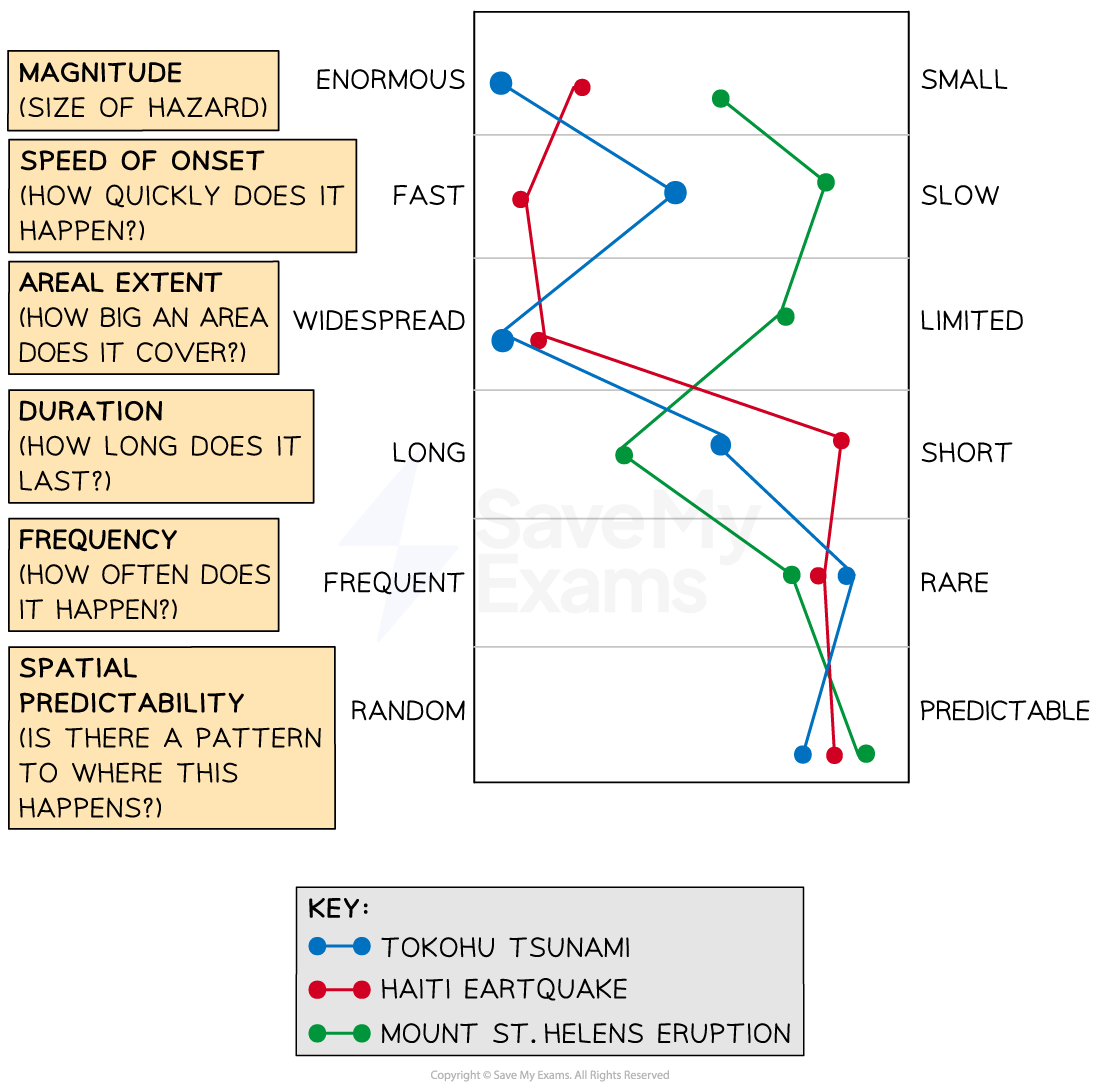Tectonic Hazard Magnitude
Earthquake magnitude
- Magnitude is the most common way to measure an earthquake
- It measures the energy released at the source (focus)
- The magnitude can be measured on different scales but the one which is reported on the news when a earthquake occurs is the Moment Magnitude Scale (MMS)
- It is measured using seismographs
- The MMS goes from 1 which are not felt by humans to 10
- The MMS is a logarithmic scale which means that a 6 on the scale is a ten times increase in amplitude from a 5
- The energy release is 32 times greater

Magnitude of earthquakes
Earthquake intensity
- The intensity of an earthquake is its impact on people, as well as the built and natural environments
- The Modified Mercalli Intensity Scale is used to measure the intensity
- The scale goes from I to XII

Modified Mercalli Intensity Scale
Exam Tip
Remember not to confuse magnitude and intensity.
Magnitude is the amount of energy released. Whereas intensity is severity of ground shaking at a particular place based on the effects on humans, buildings and the environment.
Measuring volcanic eruptions
- Every eruption is unique some are gentle, others are hugely explosive
- The Volcanic Explosivity Index (VEI) is used to measure the size of an eruption
- This can not be measured on a scientific instrument so is calculated based on a series of measurements and observations
- These include:
- Height of material ejected into the atmosphere
- Volume of material
- Duration of the eruption
- These include:
- This is a logarithmic scale from 0-8

Volcanic Explosivity Index
Exam Tip
Magnitude is one of the key factors in the impact a hazard event has. However, it is important to remember that it is not the only factor - a magnitude 6.1 earthquake can have severe impacts in one area but the same magnitude in another area may have few impacts


